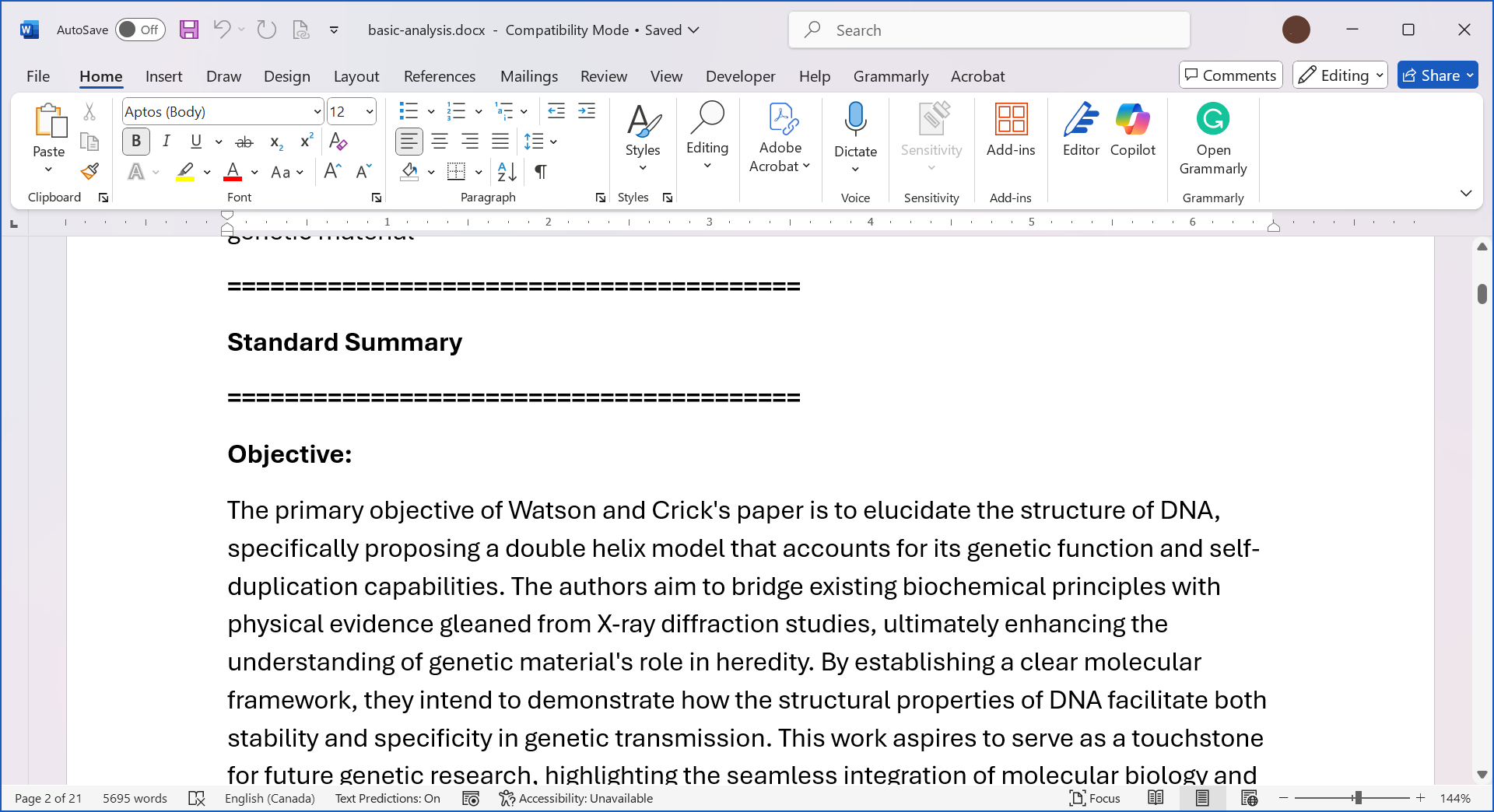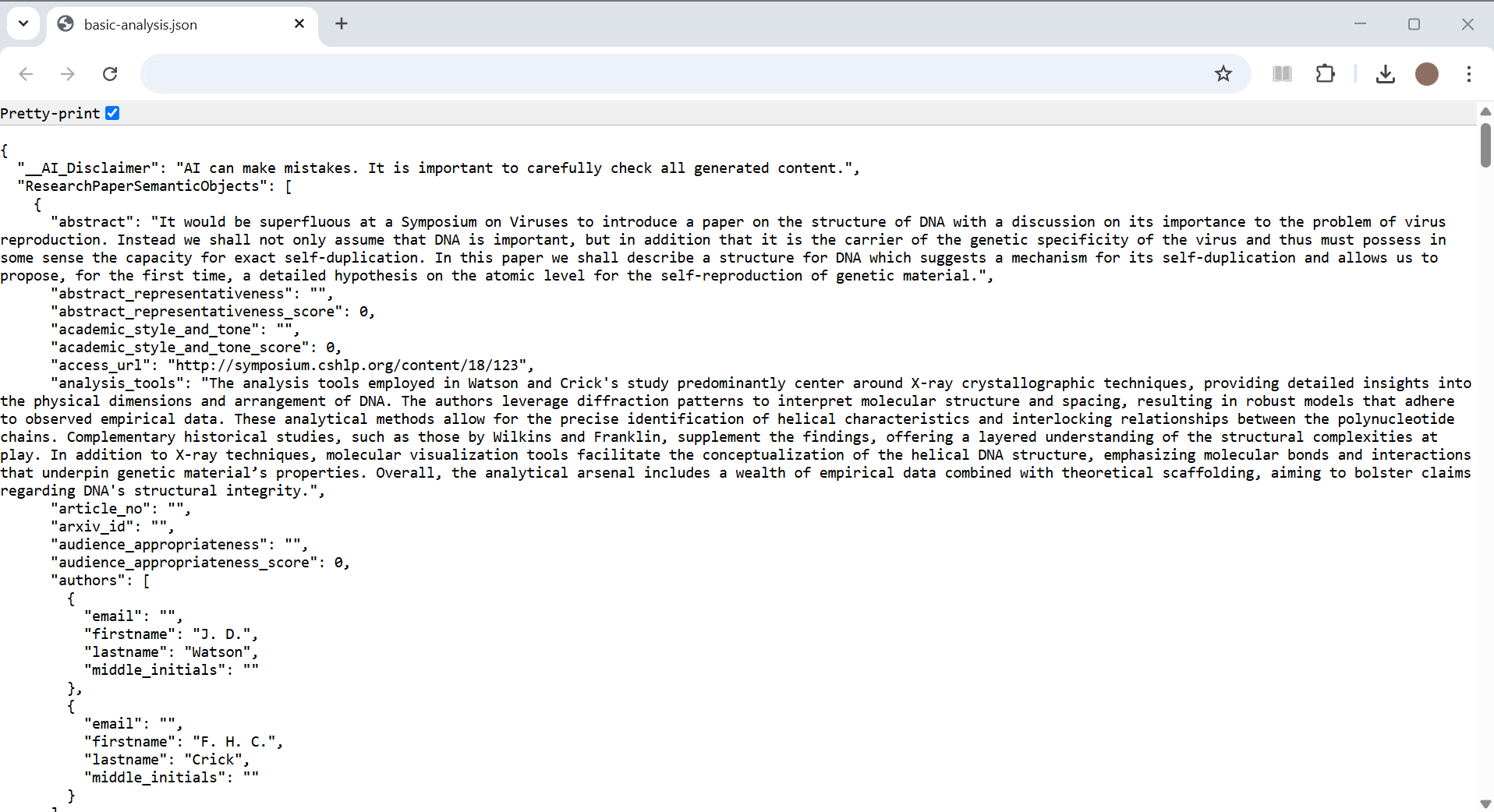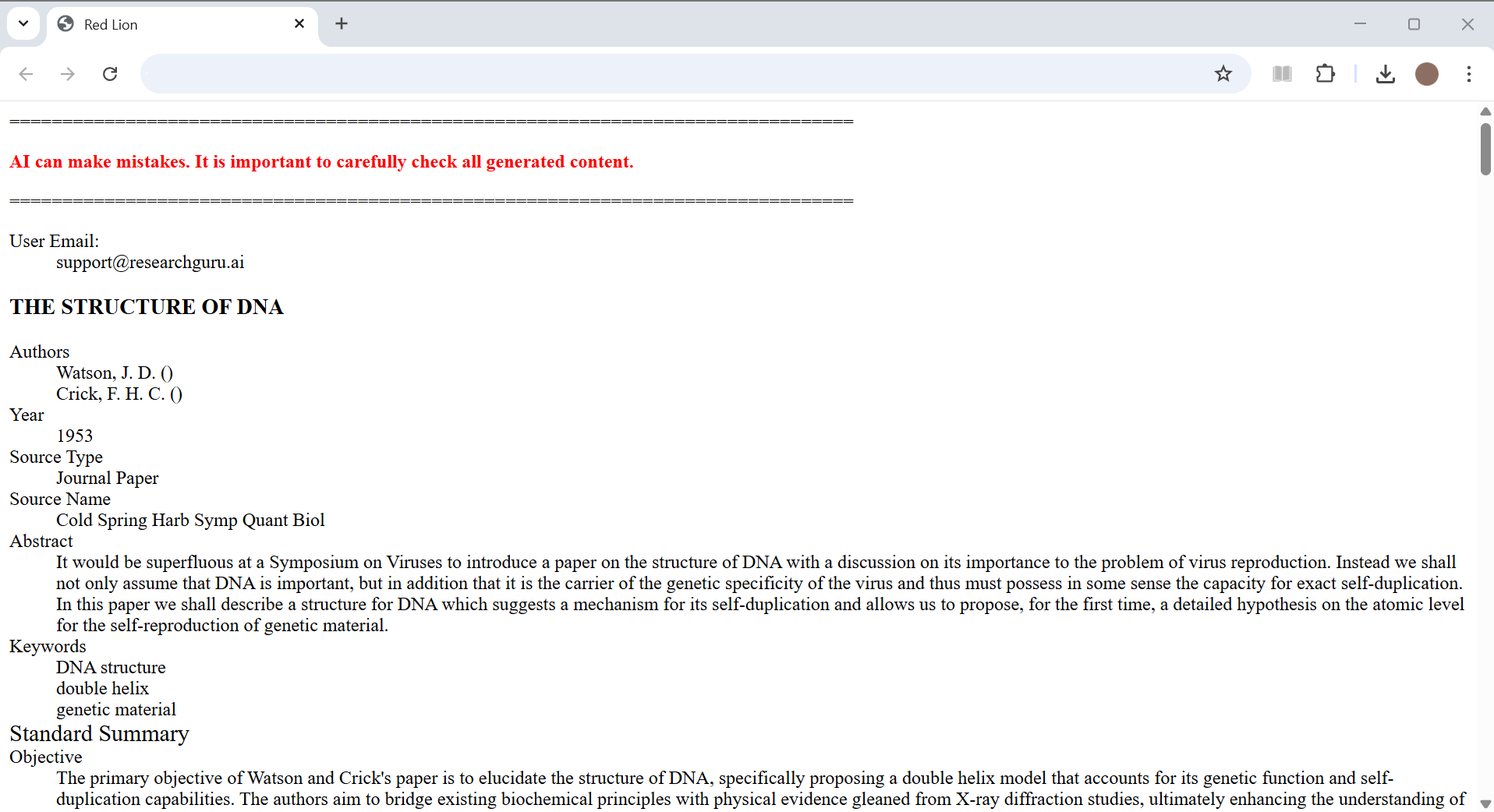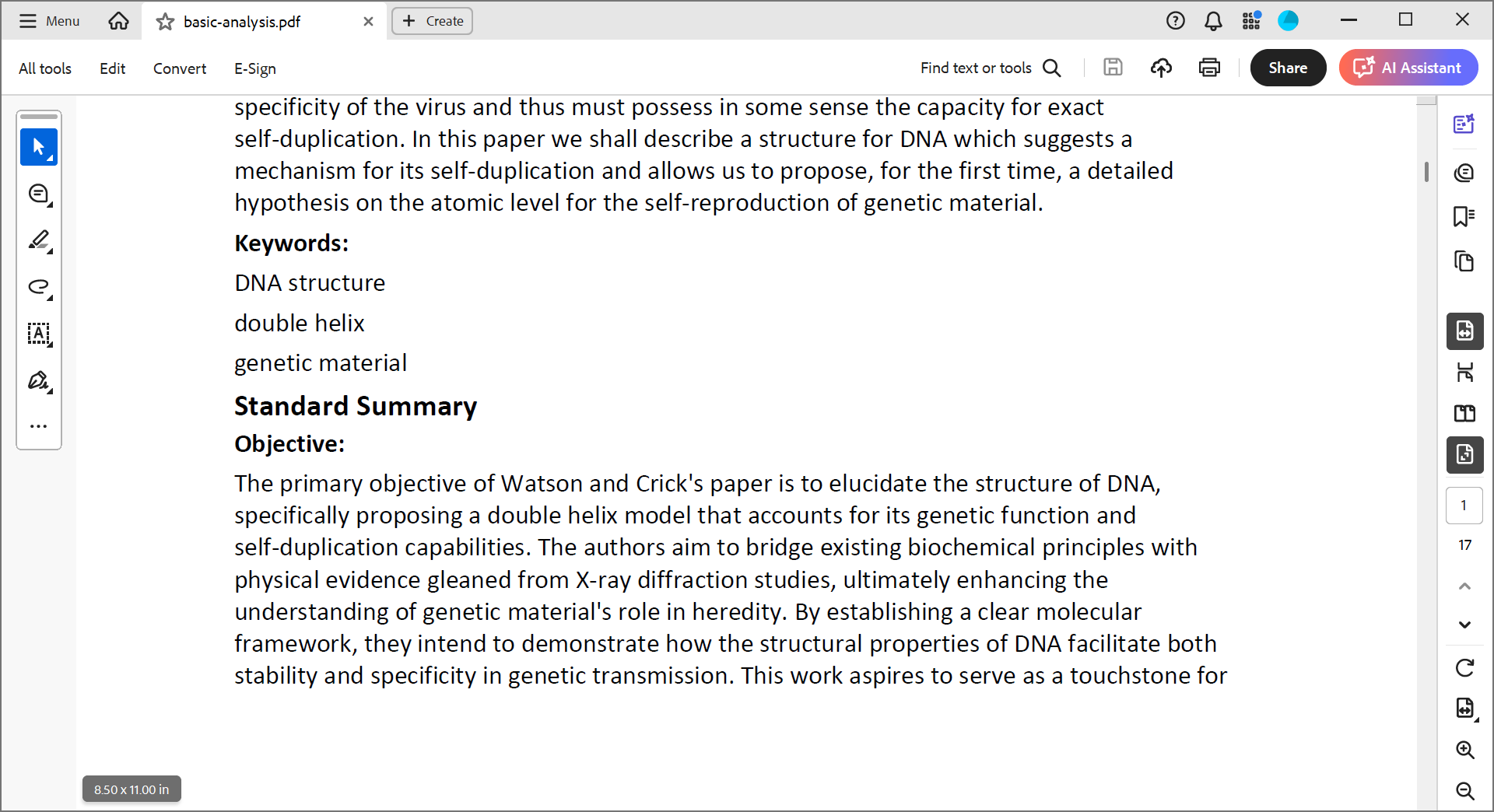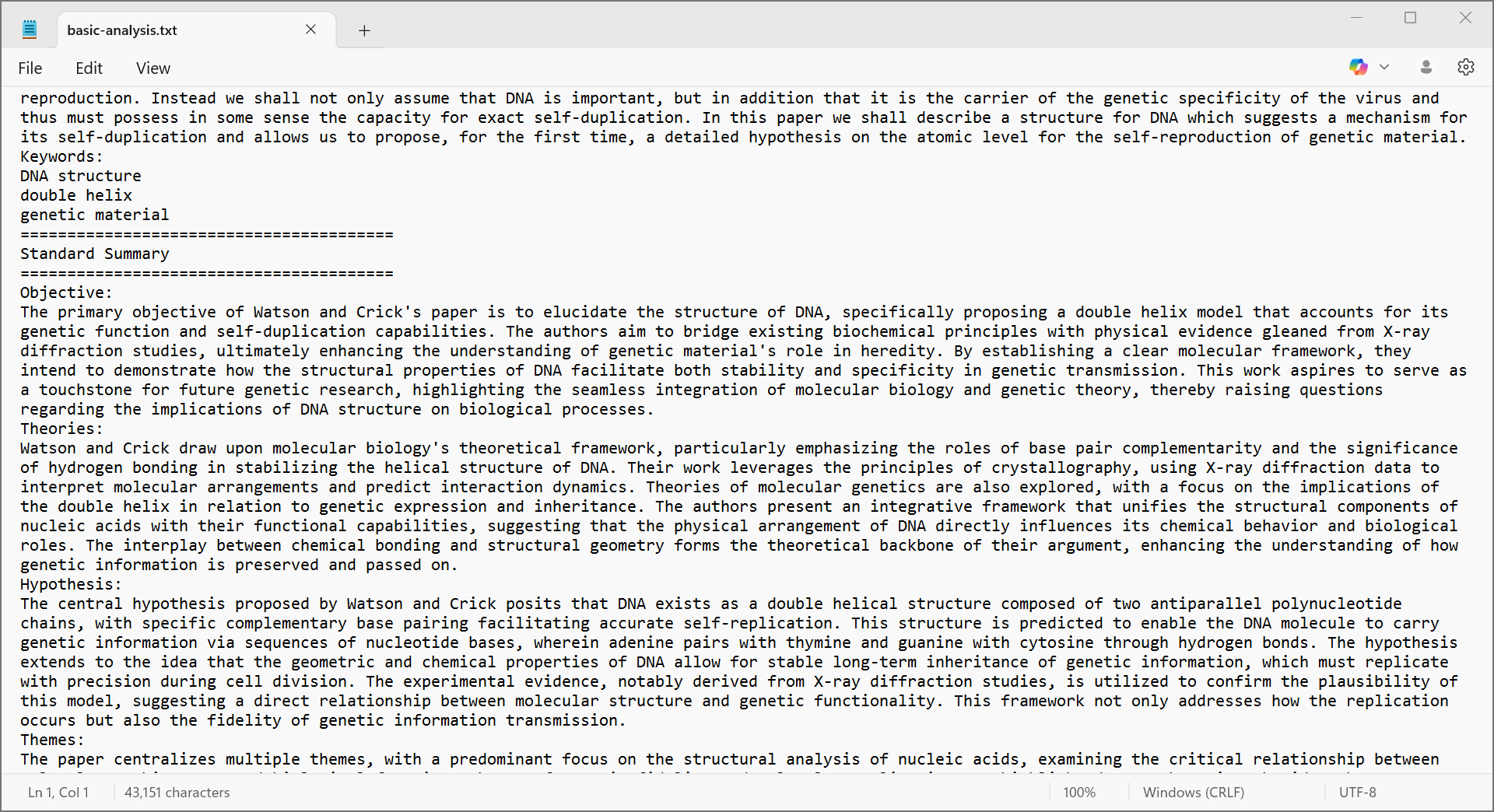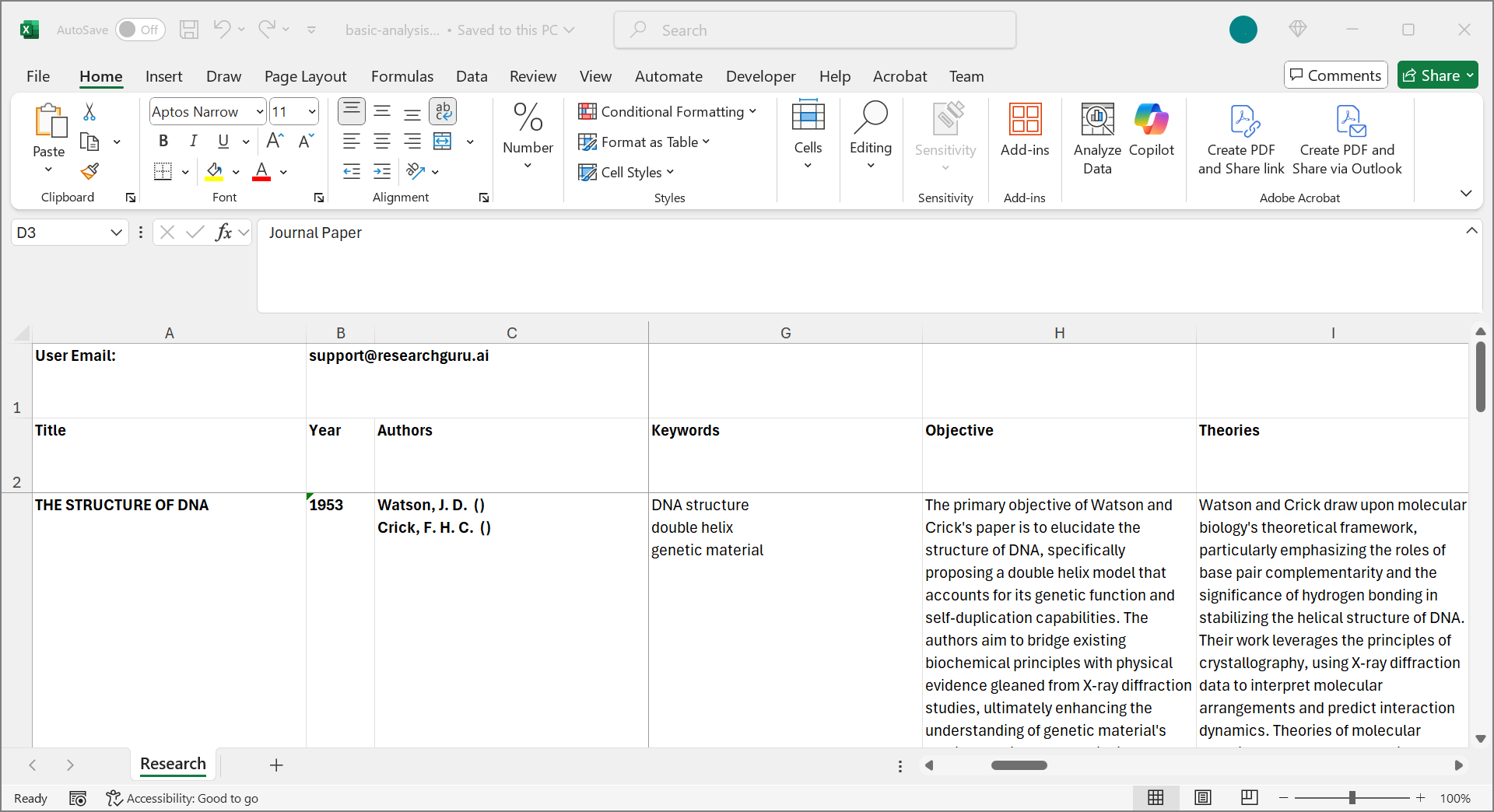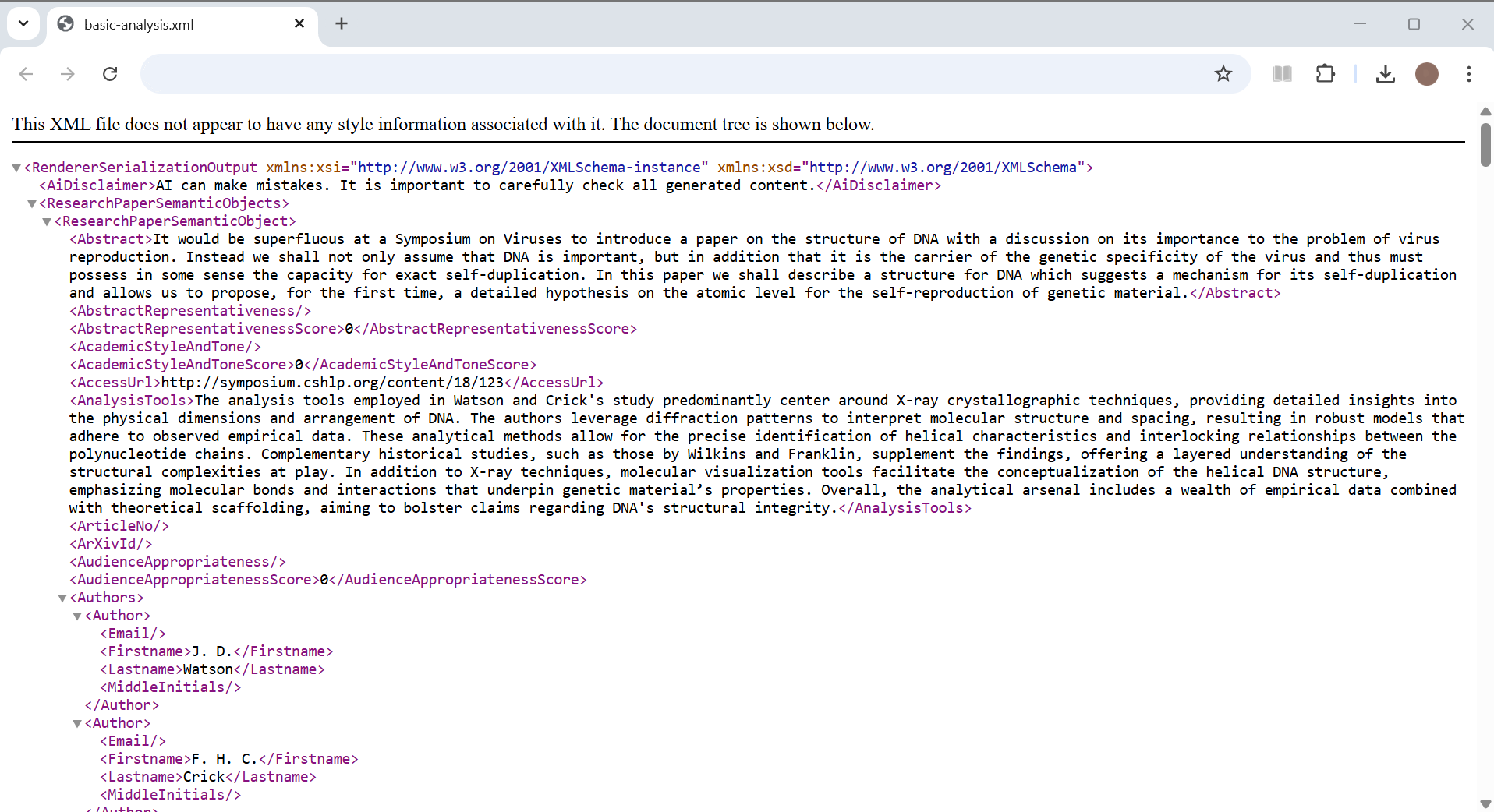| Standard Summary |
| Objective |
Introduces the central goal of the paper—what the researchers aimed to prove and challenge, and why it matters within its field. |
| Theories |
Outlines the foundational concepts and frameworks the study builds upon, including any models and prior research that informed its approach. |
| Hypothesis |
Summarizes the authors’ core assumption and testable claim—what they predicted and expected to discover through their research. |
| Themes |
Highlights key topics, patterns, and philosophical undercurrents that recur throughout the paper—often broader than the hypothesis alone. |
| Methodologies |
Describes the methods used to conduct the research, including models, datasets, experimental setups, and procedural steps. |
| Analysis Tools |
Lists and explains the metrics, visualizations, and evaluation tools used to analyze data and test the research hypothesis. |
| Results |
Details the primary findings and outcomes—what the study revealed, supported by data, comparisons, and benchmarks. |
| Key Findings |
Emphasizes the most important takeaways from the study that may have broader implications and challenge existing knowledge. |
| Possible Limitations |
Identifies weaknesses, uncertainties, and constraints in the research design and results, as acknowledged by the authors. |
| Future Implications |
Suggests how the research could impact future work—whether through direct applications, further investigation, and paradigm shifts. |
| Key Insights & Ideas |
Showcases intellectual breakthroughs and fresh perspectives the paper introduces—what makes it matter. |
| Other Metadata |
Includes citation information and identifiers (e.g., DOI, journal, authorship) necessary for referencing and academic attribution. |
| Sample Reports |
|
| Semantic Analysis - Enhanced Summary |
| Supporting Points |
Highlights arguments, mechanisms, and evidence within the paper that align with your specific research context—reinforcing your hypothesis and offering structural parallels. |
| Counterarguments |
Surfaces limitations, mismatches, and tensions between the paper’s focus and your research context—encouraging nuance and critical evaluation. |
| Future Work |
Identifies new directions for exploration based on the paper’s findings—especially those that connect your context to broader domains and unresolved challenges. |
| Open Questions |
Lists the unanswered and emerging questions raised by the paper—sparking reflection on what still needs to be addressed, and where your research could step in. |
| Critical Insights |
Pinpoints transformative and novel ideas from the paper that reframe the problem, challenge assumptions, and introduce breakthrough analogies relevant to your inquiry. |
| Research Gaps Addressed |
Reveals which blind spots in the literature the paper helps illuminate—especially those relevant to cross-disciplinary coordination, encoding, and system design. |
| Noteworthy Discussion Points |
Flags broader themes and provocative angles that invite debate, interdisciplinary conversation, and rethinking of foundational ideas within your research area. |
| Sample Reports |
|
| Critical Review - Academic Quality |
| Scoring |
Each quality dimension is scored using a 5-point academic scale:
- 5 : Excellent — High standard; no improvements necessary.
- 4 : Good — Well executed; only very minor improvements suggested.
- 3 : Fair — Adequate; minor issues present.
- 2 : Poor — Noticeable flaws; improvement required.
- 1 : Very Poor — Major issues; needs significant revision.
All scores are whole numbers (1–5). Each score is paired with brief, focused reasoning in the report to support revision and reflection.
|
| Overall Review |
Summarizes the paper’s academic quality and relevance as a whole, factoring in strengths, weaknesses, and readiness for publication or further development. |
| Abstract Representativeness |
Assesses how well the abstract reflects the full scope, findings, and significance of the paper’s content. |
| Research Novelty |
Evaluates how original or innovative the study’s core idea, question, or hypothesis is within its field. |
| Theoretical Contribution |
Assesses the extent to which the paper advances, refines, or critiques existing theory or conceptual frameworks. |
| Methodological Rigor |
Examines the appropriateness, precision, and consistency of the research design, tools, and procedures used. |
| Validity and Reliability of Results |
Determines whether the study accurately measures or reflects what it claims to investigate and checks if the study’s methods would yield consistent results if replicated under similar conditions. |
| Depth of Analysis |
Assesses the richness, nuance, and critical engagement shown in the interpretation of findings or ideas. |
| Critical Engagement with Literature |
Measures how effectively the paper situates itself within existing scholarship and dialogues with key sources. |
| Significance of Findings |
Evaluates awareness and handling of ethical concerns, such as privacy, consent, or fairness. |
| Ethical Considerations |
Looks at how clearly methods, data sources, and assumptions are disclosed. |
| Transparency and Reproducibility |
Determines whether others could reasonably replicate the study based on the information provided. |
| Strength of Conclusions |
Evaluates whether the conclusions are logically drawn from the data, analysis, and arguments presented in the paper. |
| Balance of Discussion |
Measures whether the discussion fairly addresses multiple perspectives, limitations, and alternative interpretations. |
| Audience Appropriateness |
Judges whether the tone, terminology, and depth of content match the expectations and needs of the intended academic or applied audience. |
| Sample Reports |
|
| Critical Review - Mechanical Quality |
| Scoring |
Each quality dimension is scored using a 5-point mechanical scale:
- 5 : Excellent — High standard; no improvements necessary.
- 4 : Good — Well executed; only very minor improvements suggested.
- 3 : Fair — Adequate; minor issues present.
- 2 : Poor — Noticeable flaws; improvement required.
- 1 : Very Poor — Major issues; needs significant revision.
All scores are whole numbers (1–5). Each score is paired with brief, focused reasoning in the report to support revision and reflection.
|
| Spelling and Grammar |
Assesses the accuracy and correctness of language mechanics, including spelling, punctuation, and sentence construction. |
| Academic Style and Tone |
Evaluates whether the writing maintains a formal, objective, and scholarly tone suitable for academic publication. |
| Organization and Structure |
Reviews the logical flow and coherence of the paper’s sections, including how well ideas are grouped and sequenced. |
| Clarity of Expression |
Measures how clearly and directly ideas are communicated, minimizing ambiguity or unnecessary complexity. |
| Consistency of Terminology |
Checks whether technical terms and key concepts are used consistently throughout the paper to avoid confusion. |
| Formatting and Referencing Accuracy |
Evaluates adherence to citation standards, formatting style guides, and completeness of references or bibliographies. |
| Figures, Tables and Visual Aids |
Assesses the quality, clarity, and relevance of visual elements and whether they support and enhance the written content. |
| Sample Reports |
|
